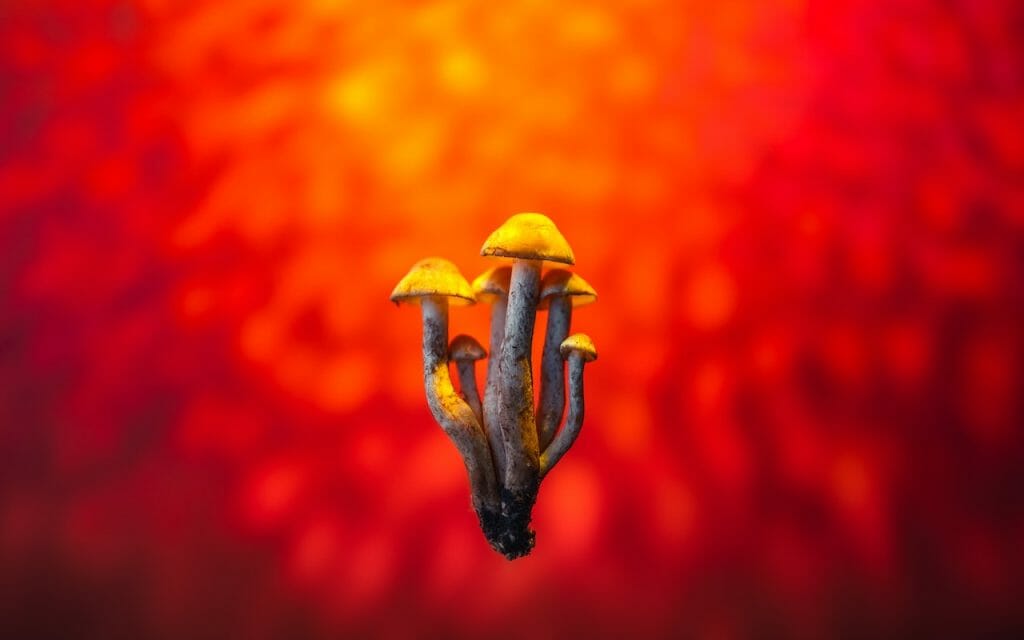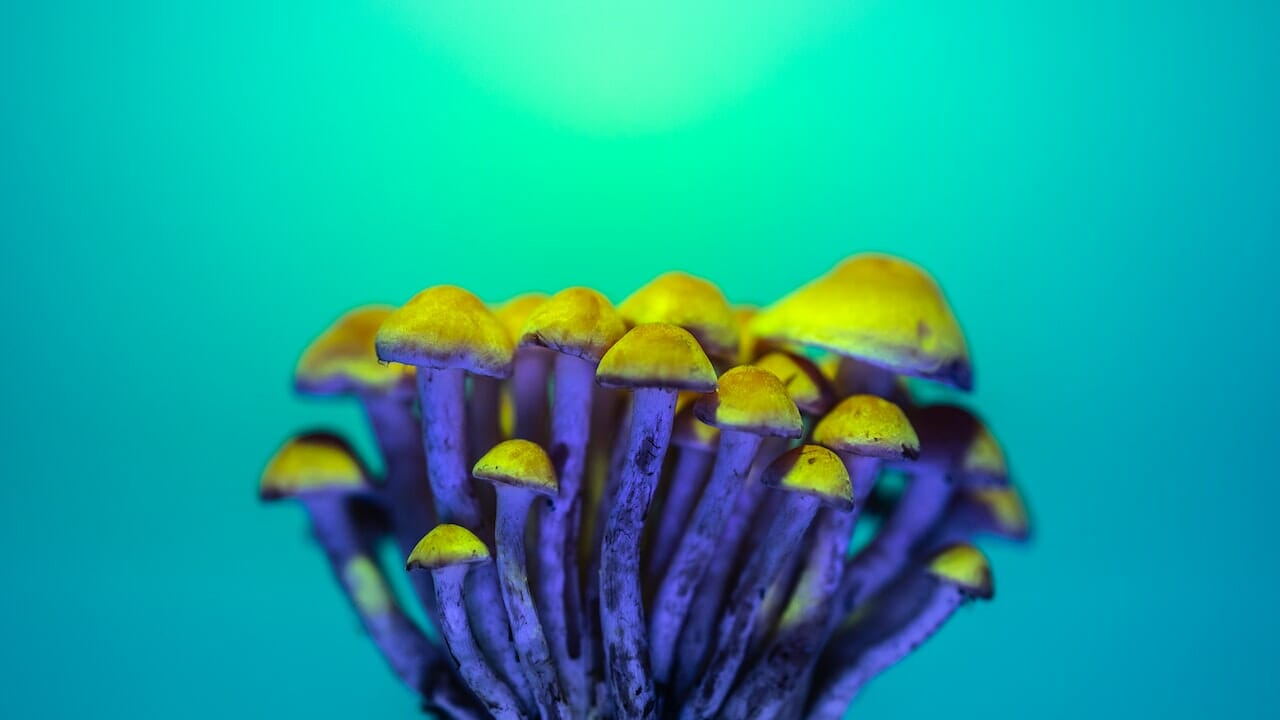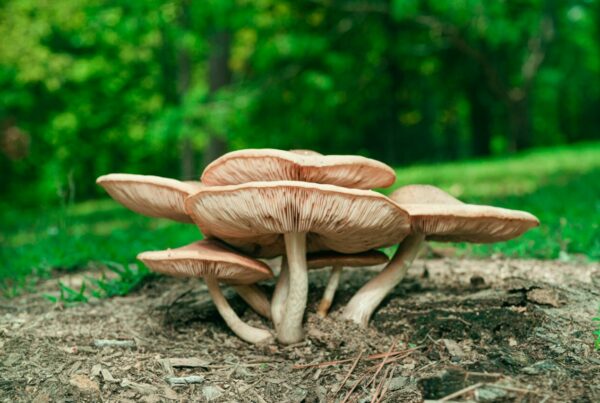LSD (lysergic acid diethylamide) is a powerful hallucinogen that has been extensively studied as a psychedelic substance. Although it was once primarily associated with recreational use, it is now viewed as a psychoactive compound that may have significant mental health benefits. This shift in understanding has led to new areas of research, such as the effects of more palatable forms of consumption like LSD edibles.
Key Takeaways:
- LSD, a potent hallucinogen, originates from the ergot fungus.
- LSD shares some similarities with psilocybin and interacts with the 5-HT2A receptors.
- LSD can induce visual modifications, mood shifts, ego dissolution, and pseudo-hallucinations.

Delving into LSD
LSD is an extraordinarily potent hallucinogen that can profoundly modify an individual’s perception of reality and greatly distort the senses. LSD originates from “ergot,” a type of fungus that grows on rye and other grains.
At the molecular level, LSD is a complex chemical that belongs to the ergoline family. Its structure comprises a bicyclic hexahydroindole group and a bicyclic quinoline group (lysergic acid). The term ‘Lysergic Acid Diethylamide’ is derived from the functional group attached to its nucleus. LSD’s structure is similar to other ergoline alkaloids, such as ergotamine, which is present in the ergot fungus Claviceps purpurea, and the neurotransmitter serotonin.
Exploring the Effects of LSD
When consumed, LSD travels to the brain and instigates chemical reactions that can persist for several hours. LSD can induce the following short-term effects:
- Unpredictable mood changes
- Distorted perception
- Dizziness
- Decreased appetite
- Difficulty in controlling movement
The Benefits What are the Positive Effects of LSD Use?
LSD has diverse benefits, which are largely influenced by the dose taken. The majority of studies concentrate on the benefits associated with lower doses of this hallucinogenic substance. This article will discuss the potential upside of LSD consumption.
Pain Management and Neuronal Development
Researchers at Maastricht University discovered that a single microdose of LSD can induce pain-relief effects lasting a minimum of five hours, if not longer.
In the Cold Pressor Test, where participants keep their hands in 3°C (37.4°F) water for as long as possible, individuals who took 20 mg of LSD were able to withstand the cold for 20% longer than those who didn’t. They also reported reduced pain and discomfort.
LSD can also promote the development and growth of the brain’s 86 billion neurons. Moderate LSD doses, ranging from 5 to 20 ug, increase BDNF levels in blood plasma. This is important because mood disorders like depression, often associated with neuroplasticity issues, may be mitigated due to LSD’s positive impact on neuronal health.
Mental Health Enhancement
Dr. Robin Carhart-Harris from Imperial College London introduced the entropic brain hypothesis. This theory posits that mental health disorders may be attributed to rigid thought patterns, upheld by an overactive default mode network (DMN). LSD and similar psychedelic substances can interrupt the DMN, increase brain entropy, and help to dismantle negative neural pathways while fostering the growth of positive ones.
A study involving more than 1,000 microdosers reported a decrease in depression. Another extensive cross-sectional study found a lessening in negative moods and detrimental attitudes, coupled with an improvement in open-mindedness and cognition.
Addiction Treatment
A meta-analysis of randomized-controlled clinical trials using LSD in psychiatry demonstrated its highest effectiveness in treating alcohol dependency. This conclusion is further reinforced by the positive results observed in many patients treated for alcoholism by Humphrey Osmond and at the Spring Grove Hospital Centre during the 1950s and 1960s.
Easing Anxiety and Depression at End of Life
Dr. Peter Gasser’s research has found that LSD-assisted psychotherapy can aid terminally ill cancer patients in easing their end-of-life anxiety, enhancing their overall quality of life. Currently, a Phase 2 trial is ongoing to further explore the potential benefits of LSD therapy for treating depression.
Exploring LSD Edibles: Understanding their Composition and Production
LSD edibles are a type of food and beverage products infused with the hallucinogenic substance, LSD. They come in many forms, including chocolates, candies, and baked goods, and unique variations like LSD mints.
What’s Inside
- LSD: This is the primary active ingredient that produces hallucinogenic effects. It is carefully measured and incorporated into the edible.
- Edible Base: The LSD is usually dissolved or mixed into a consumable substance such as a gummy, candy, sugar cube, or another ingestible item. These substances act as the carrier for the hallucinogenic compound.
- Flavouring and Ingredients: The specific edible product may contain flavourings, sweeteners, and other ingredients to enhance its taste and texture. These may include natural or artificial flavours, colours, and sugars, and can greatly vary.
Production Process:
- LSD Synthesis: The first step is the chemical production of LSD. This process requires a deep understanding of organic chemistry and the availability of necessary chemicals, equipment, and a laboratory environment.
- Liquid Formulation: Once the LSD is produced, it is usually converted into a liquid solution by dissolving it in a solvent. This solution constitutes a concentrated LSD mixture.
- Infusion: The liquid LSD is then infused into an edible medium like gummy sweets, sugar cubes, or blotter paper. The medium absorbs the liquid, allowing the LSD to be consumed orally.
The Psychedelic Experience: Effects of Psychoactive Compounds in LSD Edibles
LSD produces intense visual effects. Colours appear more vivid, objects might seem to have halos or rainbows around them, and shapes can transform. Users may have visual experiences regardless of whether their eyes are open or closed.
LSD produces vivid, rapidly changing, brightly coloured geometric patterns, among other visuals. These are termed “pseudo-hallucinations” because, while they are visually striking, individuals are aware they are not real but are a manifestation of the drug’s effects.
LSD offers a gateway to alter one’s perception of self and environment. It can induce a variety of mental states. Thoughts might be strikingly clear and meaningful or may lack logical continuity. Other potential effects include alterations in the perception of time, distance, and body image. The boundary between one’s self and the external world may appear blurred. Some users report a phenomenon of sensory fusion, such as seeing music or hearing colours.
Suggested LSD Products
There’s a wide array of LSD edibles available, but it’s paramount that you source these from a trustworthy dispensary. It’s crucial to know that the edibles contain LSD and not other substances like PCP (embalming fluid), ecstasy, or ketamine.
Deadhead Chemist – LSD Infused Gummies
Deadhead Chemist offers LSD-laced edibles, each with 100 micrograms (ug) of LSD in a range of flavours. Each pack contains a single gummy, which has shown promise in assisting individuals with conditions like obsessive-compulsive disorder (OCD), post-traumatic stress disorder (PTSD), alcoholism, depression, and cluster headaches.
Deadhead Chemist – Mint Tea
Deadhead Chemist’s raspberry mint tea provides a more pleasurable and taste-filled way to experience LSD’s effects. LSD and other psychedelics imitate the serotonin neurotransmitter and enhance the brain’s flow state.
Earthly Delights – Candy Flips
Candy flipping became popular during the late 1980s rave culture. Today, thrill-seekers and party enthusiasts still enjoy the unique combination of these two powerful substances. Users often report deep feelings of love and interconnectedness, enhanced by captivating visual effects like intensified colours, object morphing, and complex geometric patterns.
Concluding Remarks
LSD has traditionally been linked with profound, transformative experiences. With our growing scientific understanding of this compound, its popularity is on the rise, especially with the introduction of LSD-infused edibles, presenting a delightful new way to experience its effects.
Experience LSD in a safe and enjoyable manner with carefully regulated doses.
As the leading supplier in Canada, Magic Mushroom Toronto Canada provides an extensive range of superior quality shrooms online, including a variety of LSD-infused edibles and cannabis products. Take your time to explore our collection, add your favourite items to your cart, and sit back while we handle the delivery. Our diverse offering also includes psilocybin shrooms, edibles, beverages, and capsules for your convenience. Don’t forget to check out our LSD delivery page for additional information!
Frequently Asked Questions
What sets LSD apart from psilocybin?
CHARACTERISTICS LSD PSILOCYBIN Source Semi-synthetic chemical compound Occurs naturally in fungi Available Formats Tabs, microdots, liquid, gummies, blotter paper Dried mushrooms, capsules, teas, chocolates Potency Highly potent, dosed in micrograms (ug) Varies based on species of mushroom and method of preparation Onset and Duration Quick onset (15-60 minutes), short duration (3-5 hours) Slower onset (30-60 minutes), medium duration (4-6 hours)
How can one avoid negative experiences with LSD?
- Choose Your Setting Wisely
- Prepare Your Mindset
- Start with a Minimal Dose
- Have a Trip Supervisor
- Create a Calm Atmosphere
- Utilize Deep Breathing and Grounding Techniques
- Accept and Let Go
How long do the effects last?
The effects of the acid typically begin to appear between 30-60 minutes after ingestion. Individuals with a higher sensitivity to psychedelics may start to feel the effects In as little as 15 minutes, you’ll be able to detect if you’ve ingested acid. The apex of your trip will transpire roughly three hours into your experience. Time may appear to decelerate, and hallucinations may occur.
Hold on, feeling detached from reality during this stage is not unusual. The peak phase persists between 3 and 5 hours, after which the offset phase continues for another 3 to 5 hours.
How does LSD interact with the human body?
LSD mainly interacts with the brain’s serotonin system by binding to and stimulating the 5-HT2A receptor. This interaction initiates a range of neurochemical and physiological responses. The effects of LSD, which can greatly differ, can be influenced by certain factors.
Does LSD exist in forms other than edibles?
Yes, LSD is available in a variety of formats. The four primary types of LSD products are blotter paper, liquid solutions, tablets/microdots, and gelatin sheets.
Further Reading:
| CHARACTERISTICS | LSD | PSILOCYBIN |
| Source | Semi-synthetic chemical compound | Occurs naturally in fungi |
| Available Formats | Tabs, microdots, liquid, gummies, blotter paper | Dried mushrooms, capsules, teas, chocolates |
| Potency | Highly potent, dosed in micrograms (ug) | Varies based on species of mushroom and method of preparation |
| Onset and Duration | Quick onset (15-60 minutes), short duration (3-5 hours) | Slower onset (30-60 minutes), medium duration (4-6 hours) |





